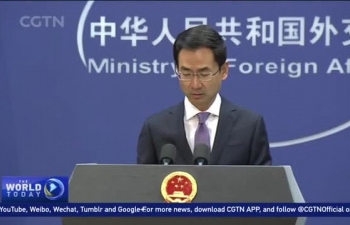WASHINGTON, May 15 (Xinhua) -- The U.S. Department of Homeland Security (DHS) on Tuesday released a new Cyber Security Strategy, citing evolving threats from cyberspace that the country is facing.
Secretary of Homeland Security Kirstjen Nielsen told Congress in a hearing Tuesday that "the strategy is built on the concepts of mitigating systemic risk and strengthening collective defense, both (of which) will inform our approach to defending U.S. networks and supporting governments at all levels and the private sector in increasing the security and resilience of critical infrastructure."
The 35-page paper lists the strategy's five pillars, focusing on identifying risks, reducing vulnerability, reducing threats, mitigating consequence and enabling cybersecurity outcomes.
The document painted a evolving landscape in the realm of cyberspace, saying that developing technology and growing threats from nation-states and terrorists to penetrate U.S. infrastructure calls for a new approach to the country's defense in cyber security.
According to statistics, the number of cyber incidents on federal systems reported to DHS increased more than ten-fold between 2006 and 2015.
The DHS effort ran parallel to recent steps from the Pentagon to beef up its cyber warfare force, as some in Washington claimed that the age of cyber warfare has arrived.
After a 2017 directive from U.S. President Trump, the Pentagon on May 4 elevated the U.S. Cyber Command to the status of a unified combatant command.













